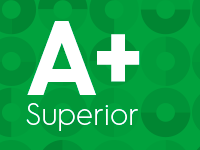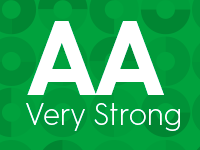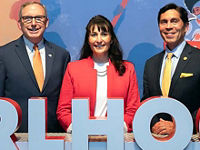Today’s workforce is the most age-diverse ever.1 With at least four generations working side by side — if not five — you’re likely to work with a Baby Boomer or a Generation Z up-and-comer.
Proactive efforts to build and sustain effective cross-generational teams can help unlock the unique benefits of this age-diverse workforce.1
Generational differences in the workplace
It is essential to learn what traits, beliefs and life experiences mark each generation, influencing how they work, communicate and respond to change. For instance, consider how the generations can differ:2
Silent/Greatest
Shaped by the Great Depression and World War II, they are motivated by respect and recognition. Their communication style is more of a personal touch, preferring handwritten notes over email. They are dependable, straightforward, tactful, loyal.
Baby Boomers
Shaped by the Vietnam War and the Civil Rights Movement, Boomers are motivated by company loyalty, teamwork and duty. Their communication style is whatever is most efficient, including face-to-face and phone calls. They are optimistic, competitive, workaholic and team-oriented.
Gen X
Shaped by the AIDS epidemic, the Berlin Wall fall and the dot-com boom, they are motivated by diversity, work-life balance and duty. Gen Xer’s communication style prefers immediate feedback and face-to-face. They like flexibility and being independent.
Millennials
Shaped by Columbine, 9/11 and the internet, they are motivated by responsibility, manager quality and unique work experiences. Their communication style is IMs, texts and email. Millennials are competitive, open-minded and achievement-oriented.
Gen Z
Shaped by life after 9/11, the Great Recession and young access to technology, Zoomers — as they are often referred as — are motivated by diversity, individuality and creativity. Their communication style is IMs, texts and social media. They are progressive, entrepreneurial and global, while being less focused.
Connect@Securian event: Cross-generational collaboration and mindsets
Recently, the Securian Young Professionals Network (SYPN) and the DEI (Diversity, Equity, and Inclusion) Center of Excellence held an insightful panel discussion that offered an on-the-ground view of the expectations of different generations.
Facilitated by Elena Imaretska, DEI Center of Excellence, the panel members included: Jon Thomas, Regional Vice President - LTC, Individual Solutions; Cary Felbab, Second VP Retail Technology, Enterprise Technology; Leah Henrikson, Talent Acquisition Director, HR; Katie Stedman, Learning and Development Consultant, HR; and Nona Beining, Customer Insights Consultant, Enterprise Technology.
The panel discussed a wide variety of helpful tactics and ideas they’ve tested in their work across Securian: from recruiting and onboarding new associates, to leading teams, to learning from and building relationships with customers. A common theme emerged: the key to successful cross-generational collaboration is a learning mindset with the commitment to connect as full human beings. One example was during the enterprise onboarding program, where all stages of careers — from the first job to seasoned VP — were mixed together to spark the development of new connections and camaraderie. Another example was at the year-end celebration of Securian’s successful intern program, when the leaders shared what they’ve learned from their interns, showcasing how one is never too experienced to learn and grow.
“To be an inclusive organization, we have to continue to hone our cultural competence and ability to adapt our behavior based on the needs of our customers and employees,” Imaretska said. “Cultural identity includes age and generation, and as we learned in the insightful panel, different generations have unique expectations and mindsets. Of course, each individual is unique, so while it is so helpful to learn about each generation, the most important takeaway was that to work across generations, we need to be present and ready to listen, learn and connect.”
Opportunities in cross-cultural collaboration
Learning from both older and younger colleagues is vital as today’s workforce broadens in age. Here are a few suggestions to help build connections and positive communication with colleagues, clients and contacts of all ages and generations.3
- Know the generations and communication styles. You’ll better understand the different generations that you might have on your team when you familiarize yourself with their preferred communication methods. When you need to communicate with teammates, it’s helpful learning how they prefer to be approached. Communicate more in the beginning until you know how best to work together.
- Stay generational neutral. Avoid showing bias toward your own generational group. Learning more about the other generational members as a person — and the influences that have shaped them — helps move everyone forward more productively. Note the positive attributes of each person and what each individual contributes to a team. Remember, different perspectives are always a good thing.
- Avoid generational stereotypes. As you get to know team members of other generations, you’ll probably figure out that much of the stereotypes about other generations (think lazy Millennials or tech illiterate Boomers) are false or at least not that pronounced.
- Get involved with multi-generational activities. Interacting outside the workplace is a great way to dispel misconceptions that people hold about colleagues belonging to a different generation. Consider joining an associate resource group. Groups bring together associates at different levels, generations and across departments to build community and build cross-generational friendships.
- Take advantage of learning opportunities. The importance of learning new skills and expanding knowledge is one of the rare things that all generations will agree are important in the workplace. The beauty of learning is that it can go both ways. Older generations can learn from younger ones and vice versa.
By discarding stereotypes and embracing open communication, individuality and collaboration, we can help our multigenerational workforce work well together and deliver on their personal and organizational goals. From customers to associates to partners, we constantly navigate different mindsets and communication styles to create great experiences, and there is always more to learn!


